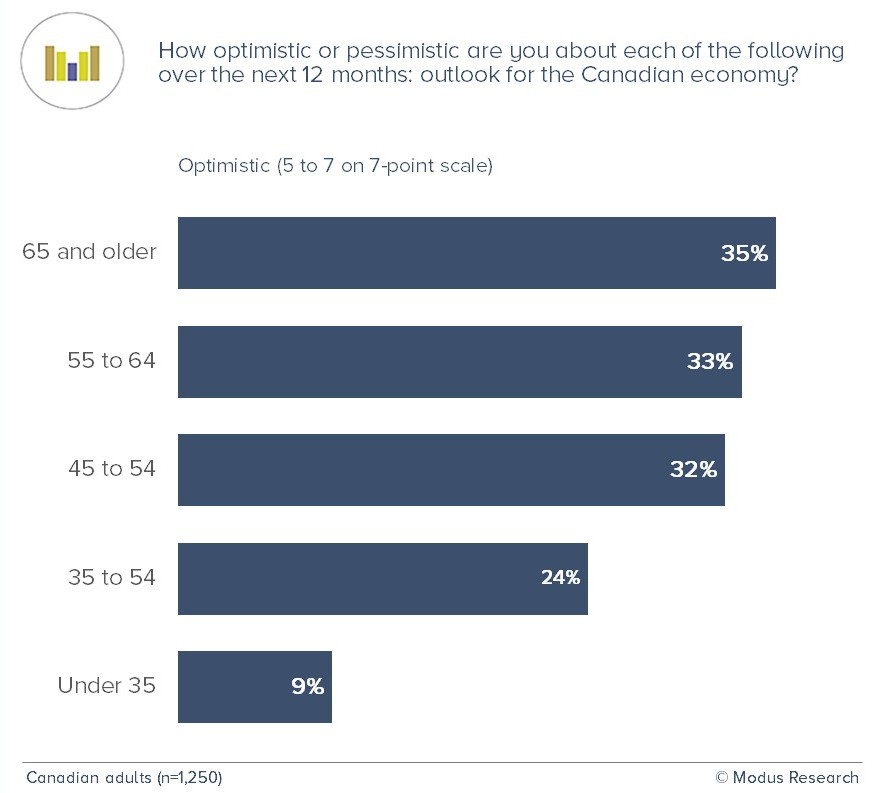The most recent survey from Modalis Public Opinion finds that a strong majority of Canadians are pessimistic about the near-term future.
Key findings in this release:
- A large majority are pessimistic about the social and political health of Canada
- Few are optimistic about the economic outlook
- Young Canadians have an especially bleak outlook about their economic prospects
Canadians are decidedly gloomy about the near term future of Canada.
Fully 70 per cent of Canadians are pessimistic about the social and political health of Canada over the next year.
Just a quarter of Canadians are optimistic about the economy.
Pessimism about the economy persists. Over the past few years, more than half say they are pessimistic about the 12 month economic outlook.

A tiny number of young Canadians are optimistic about the economy.
Optimism about the economy increases with age … but not by much.
The most economically optimistic group of Canadians across any demographic are seniors. Yet even among this group just over one-third are optimistic about the economy.
Very few among young Canadians have a positive economic outlook – a mere 9 per cent.
Discussion
It is remarkable to see such a large majority of Canadians downbeat about the social and political health of Canada. This portends potentially turbulent times for Canada. There is persistent pessimism about the economy despite an uptick in positivity. The lack of economic optimism among young Canadians is striking, albeit not surprising. Although the price of housing is of high concern to most Canadians, it is particularly acute among those under 35 years of age.
Methodology
The survey was conducted from January 27 to February 13 using the Modalis Public Opinion panel – 100% recruited using random probability telephone sampling. Because the panel is built entirely using random probability sampling, it is valid to cite the margin of error for this survey. The survey is based on a representative sample of 1,250 Canadian adults and has a margin of error of +/- 2.8% points, 95 times out of 100. The survey data is weighted by age, gender, household income, and region according to the latest Statistics Canada census.




